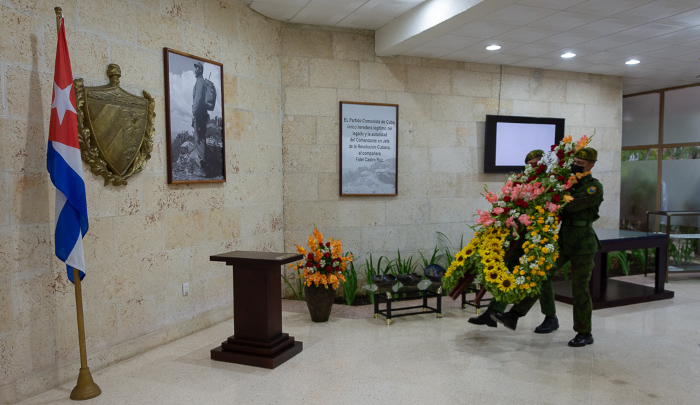 Photo: Leandro Pérez Pérez/ Adelante
Photo: Leandro Pérez Pérez/ Adelante
CAMAGÜEY.- The body of Fidel Castro would not live forever, by natural law, but it was unbelievable that relationship of his name with the death, because from a young age he was inhabiting spaces of the popular imagination where the timelines are imprecise, where he just dies of oblivion or for lack of memory.
Most of the Cubans who were born, grew up and aged watching him in his transition from the olive green uniform to the comfortable clothes of grandfather, he avoided thinking about the imminent tragedy; however a group had to play that path for the torrent of pain of an entire country.
José Rodríguez Barreras, director of the Office of the Historian of the City of Camagüey (OHCC), received the mission on a Saturday night, in front of Francisco Almeida, then Head of the Ideological Department of the Party in the province. Noel González, from Camagüey, an official of the ideological sphere of the Central Committee, toured the provinces and gave 24 hours to define the place.
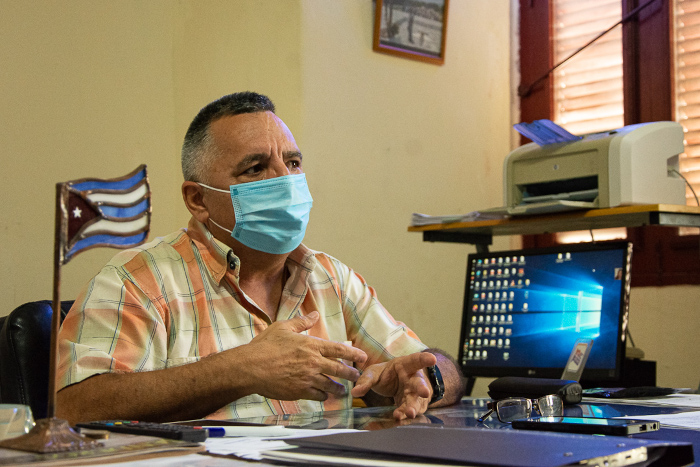 Photo: Leandro Pérez Pérez/ Adelante
Photo: Leandro Pérez Pérez/ Adelante
“We always think of the Revolution Square. In the morning, next to YaxelysGonzález I went to Alexis Souto, main designer of the square, with the idea of conditioning the main hall. Alexis proposed parking, because itfacilitated the entry and exit of people. From there we work with absolute discretion. We form a team from the Office of the Historian, headed byYaxelys, with other specialists ”, he says.
The closure of the parking space generated curiosity, because the glass doors prevented snooping inside where they lined walls, placed a false ceiling, air conditioning and installation of a means to appreciate a documentary by Orestes G. Casanova, which refers to the shock of those mournful days.
“The sculptor Roberto Estrada made the national symbols. It tried to sow guinea grass for that of the Jimaguayú Combat, but never gave in. We achieve a variety resistant to air conditioning conditions, lack of direct sun. Work was done consciously, without pressure. The site was completed about six months before the event, " adds the director.
- How did you choose the name for the Hall?"
—I proposed Salón Jimaguayú based on the empathy of the two great men, of what history has told us, of Fidel's allusions to Agramonte. I thought a lot about the May 11, 1973 speech, a piece of oratory to study by direct allusions to Agramonte, to his chivalry, which can be read between the lines, sometimes as a metaphor for what Fidel spoke of Agramonte, and of the admiration that clearly he felt for him. Then, Jimaguayú, the place where the independence hero had fallen; and then the space of two undefeated combatants.
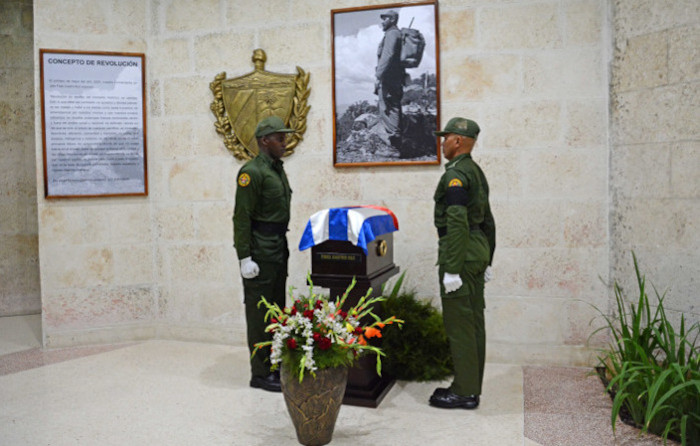
—You normally model the spaces, but it is not possible to imagine theconnotation that they will have later when the citizen arrives in body and soul.
- What did they do under pressure?
—The most complicated came after the death of the Commander. We had no information of how things were going to be, we didn't have to know them either. Coming out of the funeral procession in the Revolution we are entrusted with a pedestal for the urn and a table for that glass dome or the material that was made. The designer and I, in front of the television, calculated the dimensions of the ballot box by the detail of the flag. We were wrong by 10 centimeters. They did give us data from the table. The craftsman artist Juan Carlos Cabalé did both, he did not charge anything.
They commissioned us to put blue at the top of the table, and we went to the McPherson creation group to cover it with a fabric of that color.
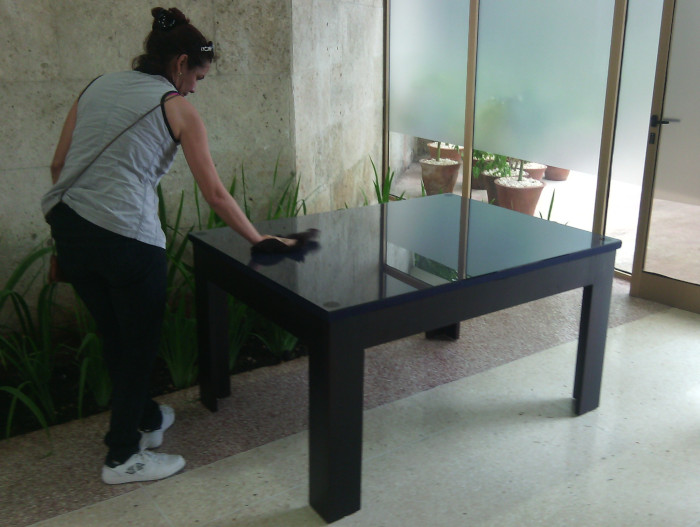 Photo: Courtesy of the Office of the Historian of the City of Camagüey
Photo: Courtesy of the Office of the Historian of the City of Camagüey
—How do you explain the sobriety of that worker, although from the emotional point of view he felt collapsed?
—What happens is that you have to grow because of your social responsibility. I would add that here one gets used to working passionately. I do not say that things always go well for us, but most people know that we are public servants. That gives it the flavor that you enjoy later. No, we are not insensitive people, but passionate, professional.
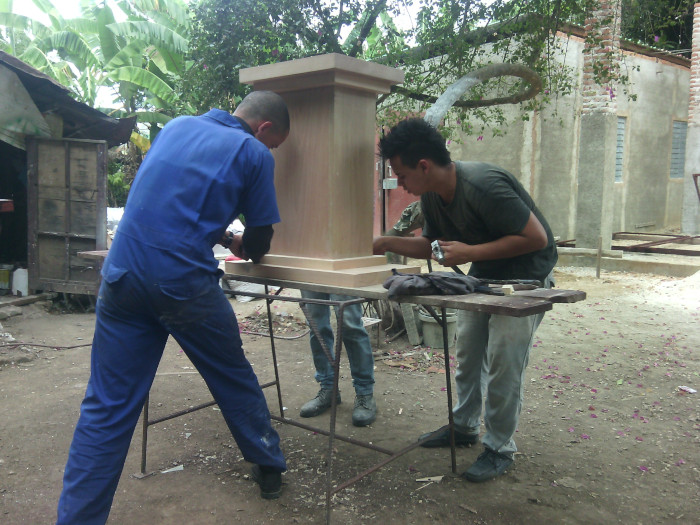 Photo: Courtesy of the Office of the Historian of the City of Camagüey
Photo: Courtesy of the Office of the Historian of the City of Camagüey
Rodríguez Barreras was one of the few civilians with the privilege of witnessing when the ashes had rested in the Jimaguayú Room. Do not forget the military ceremony rehearsal despite his exhaustion. He keeps a sample of the offering of flowers brought from Ecuador.
“These little things are what make the big things. The institution had the opportunity to live that moment, to contribute to the tribute. The one that participated that day, we continued to meet. I speak of anonymous people like the driver ”, he insists.
—Thinking about that and how something is resized from the spiritual point of view, to what do you attribute the main quality of overwhelming space?
-"The setting in the living room is very simple." The emotional charge exceeds what's formal. The symbolism was given by the two events, first the tribute and later, the vigil. Not in all parts of the country the remains stayed all night. The audiovisual reinforces those feelings of appropriation.
—On Thursday 25, the Jimaguayú Hall reopened its doors. Will they stay open?
-No. The square has been closed since last July due to constructive problems. It is already ending. Problems remain with waterproofing, that has to be solved with a minimum of resources. The electrical system has collapsed, it will be in better condition, although people only notice the restoration of the friezes. We would like to deliver it for December 23, 180 anniversary of the birth of Agramonte.
In the country of the great statesman who saw the future and came back to tell us, forecasting from the minimum scale of the associated details was essential to physical loss. There was no exact time or appointed day. Only death knew when. By that time, he would simply arrange a place in Camagüey; and that new sacred site of the Homeland is the Jimaguayú Hall.
- Translated by Linet Acuña Quilez
